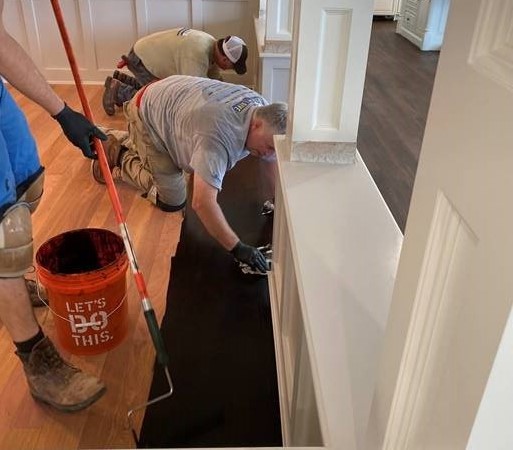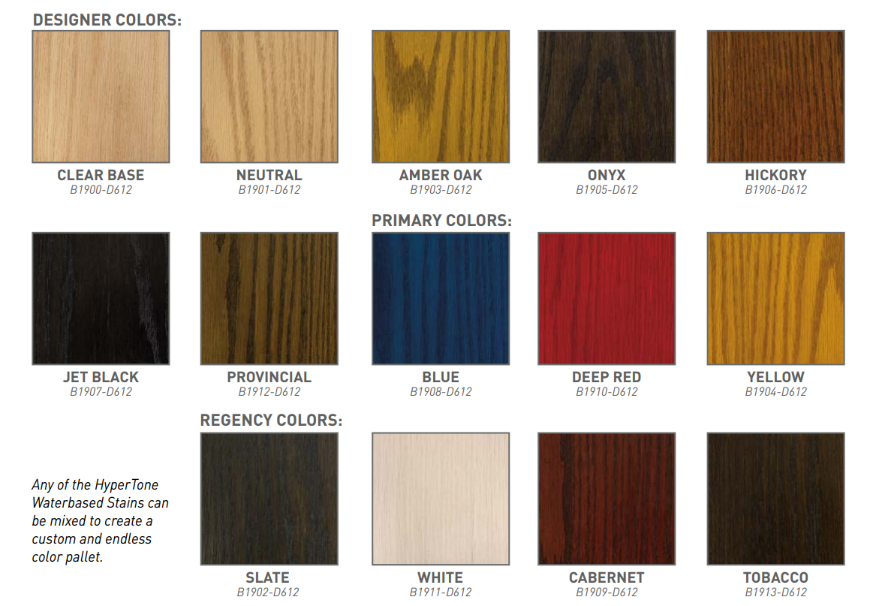

From the mid-1990s to around 2005, Brazilian cherry—also known as Jatoba—was extremely popular and installed in many homes built or renovated during that time. The Brazilian cherry wood floors and rich red, orange, and cherry tones trend has
faded, and for those wanting a change, the solution may be easier than it seems.
When a contractor is faced with a Brazilian cherry floor, painting it black or bleaching it seem like the only options. Black may not be the first choice for a customer’s new floor, and bleach is an extra step that will increase time, work, and
risk factors. Contractors can stain a Brazilian cherry floor to obtain the new color their customer wants by using the color wheel and our wide variety of HyperTone™ Stains.
The Color Wheel

The color wheel is a useful tool to determine what color masks the red of the Brazilian cherry the best. The primary colors are red, yellow, and blue and the complementary colors are green, purple, and orange. As seen in the image on the right,
the primary colors and complementary colors sit opposite on the color wheel. The colors directly across from each other will “cancel out” when applied over the other. Using this logic, Brazilian cherry floors can transform to the
desired color.
Green is directly across from red on the color wheel. It is key to 2 popular stain mixtures below for Brazilian cherry, because it cancels out red. With HyperTone Stains primary colors, achieving the green-toned stain is possible. Mix 4 parts
of
Yellow and 1 part of Blue. Adjust the color by adding more Yellow or Blue until the correct color is attained.
Bleached Look
Create a bleached color floor without the bleach. Add 60 parts of White to 1 part green
to achieve the bleached look. For floors with a heavier red color, add 1 part Slate or
Tobacco to the mix to help mask the red even more.

Brown
To get a brown color without a red undertone, use 2 parts of Onyx mixed with 1 part Yellow.
Because dark wood stains like Onyx have deep black pigments that derive from a dominant blue base, mixture with yellow will create a green tone.
Darker Brown
Use Tobacco, a very dominant, opaque stain that can be applied on its own. Adding a small amount of white can assist in covering the red if needed.
Gray
Mix 6 parts White with 1 part Slate to create a paint-like tone that will mask the red. A gray color naturally covers color well, which is why it is often used as a primer on dark-painted walls as opposed to white primers.
General Tips
Keep in mind the following tips to assist you in successfully staining Brazilian cherry.

- Sanding a floor will determine if more or less pigment will penetrate the wood. Check how much sanding is required. Read more about sanding and other procedures on exotic floors here.
- Pro Tip: If your normal abrading sequence does not allow the stain to penetrate and adjust color effectively, try lowering grit size for final pass/preparation. For example,
if 120 grit is your normal final grit size, try keeping it at 100 grit. This will allow for more stain to penetrate into the floor.
- Create test formulas to find the best ratio of colors that match the desired color. Click here to read more about using a test area to determine if the color is correct.
- Use a Clear Base to add transparency or cut color concentration
as opposed to a Neutral base, because the latter contains warm tones that
will alter the color.
By manipulating HyperTone Stains and the color wheel, Brazilian cherry can be masked and transformed into a different color. Curious about red oak floors or tinting? Watch a webinar here and check out our blog post about tinting with HyperTone Stains here.
If you have questions about HyperTone Stains, please click here to fill out the online form, and your Basic
Coatings Regional Manager will reach out to you.